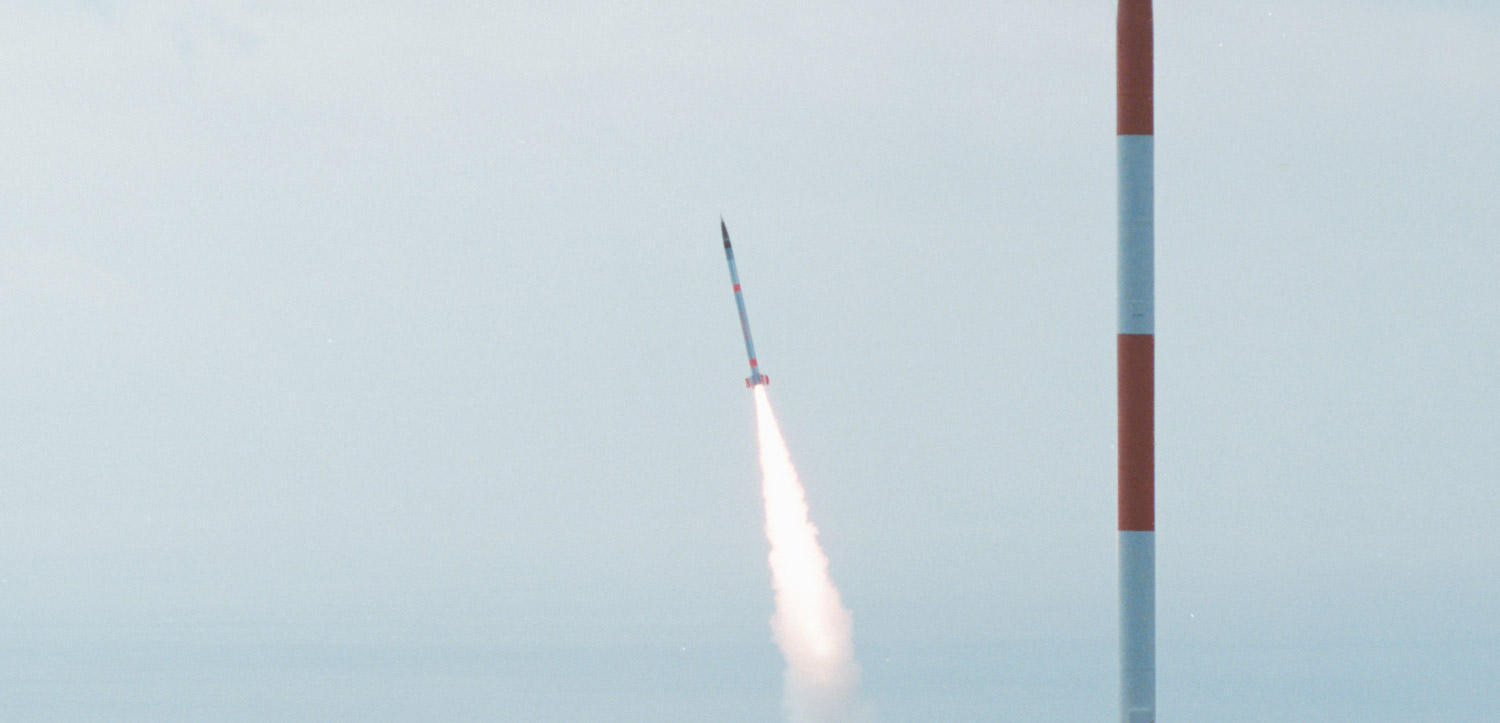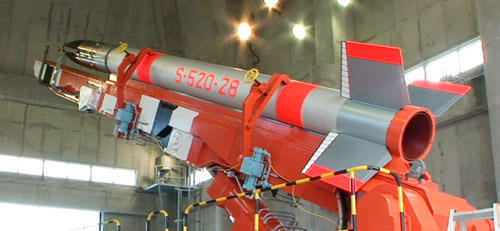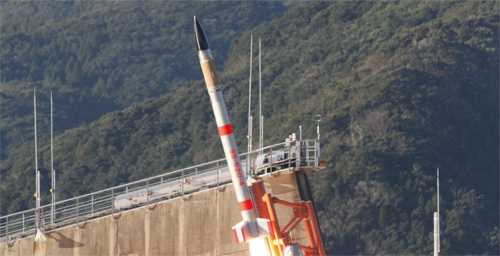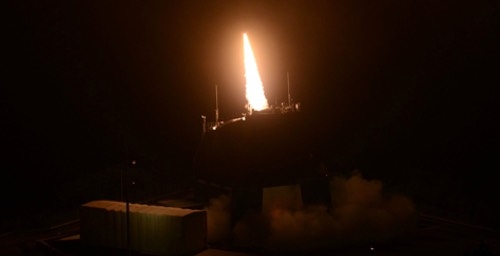The S-310 is a middle-size rocket for carrying various payloads. It is a single-stage sounding rocket, 310 mm in diameter, and can reach an altitude of 150 km. Its predecessor, the S-300, was developed for observations in Antarctica, in parallel with the S-210, and reached 160 km altitude in its first flight in the fall of 1966 (PT-300). Two out of three succeeding flights had a body trouble, which was later attributed to an unusual increase of the attack angle due to pitch-roll resonance.
In case of S-310, it is spun positively in the atmosphere to overcome resonance, and thus avoids continued resonance problems. It also corrects attitude disturbance by aerodynamic damping. The spin is provided by twisted tail fins which cause 2.8 Hz spin to the body.
The thrust programming is designed to peak in the early stage, and to keep the thrust level low in the latter half of burning time, when aerodynamic forces increase dramatically. This contributes to attaining increased summit altitude, and relieving aerodynamic heating by reducing dynamic pressure.
The chamber is made of chromium-molybden steel. The CTPB composite propellant grain is single, and has axially two different wagon-wheel port configurations. Since the aftward portion of the grain is consumed earlier, a dual-thrust profile is given. Each tail fin is made of a solid titanium plate, and the ogive nose cone is made of FRP.
In the payload bay is a yo-yo despinner system, which is actuated at 50 sec. after lift-off, to reduce the spin to 1 Hz during the observation period.
The first flight of S-310 in January, 1975, was successful, and it has been launched at Kagoshima Space Center at Uchinoura and Showa Station in Antarctica.

Sounding RocketsS-310
The S-310 is a middle-size rocket for carrying various payloads. It is a single-stage sounding rocket, 310 mm in diameter, and can reach an altitude of 150 km.
 S-520
S-520
 S-210
S-210


